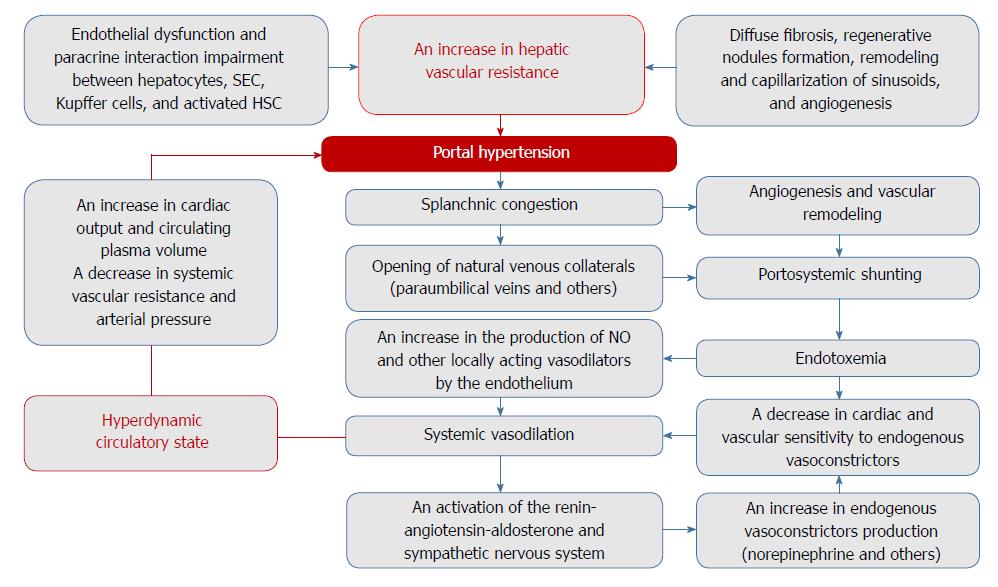Copyright
©The Author(s) 2018.
World J Gastroenterol. Sep 7, 2018; 24(33): 3738-3748
Published online Sep 7, 2018. doi: 10.3748/wjg.v24.i33.3738
Published online Sep 7, 2018. doi: 10.3748/wjg.v24.i33.3738
Figure 1 Potential mechanisms of portal hypertension pathogenesis in cirrhosis.
The newly formed blood vessels, which bypass sinusoids in response to the gross morphofunctional rearrangement of the liver in cirrhosis, fail to provide oxygen and nutrients to the tissues. With endothelial dysfunction and impaired paracrine interaction between hepatocytes, sinusoidal endothelial cells (SEC), Kupffer cells, and activated hepatic stellate cells (HSC), this increases hepatic vascular resistance to portal blood flow. Further progression of portal hypertension is a consequence of complex processes including angiogenesis, vascular remodeling, and endothelial dysfunction, which contribute to splanchnic congestion, systemic vasodilation, and portosystemic shunt formation. The subsequent hyperdynamic circulatory state worsens the course of the disease.
- Citation: Garbuzenko DV, Arefyev NO, Kazachkov EL. Antiangiogenic therapy for portal hypertension in liver cirrhosis: Current progress and perspectives. World J Gastroenterol 2018; 24(33): 3738-3748
- URL: https://www.wjgnet.com/1007-9327/full/v24/i33/3738.htm
- DOI: https://dx.doi.org/10.3748/wjg.v24.i33.3738









